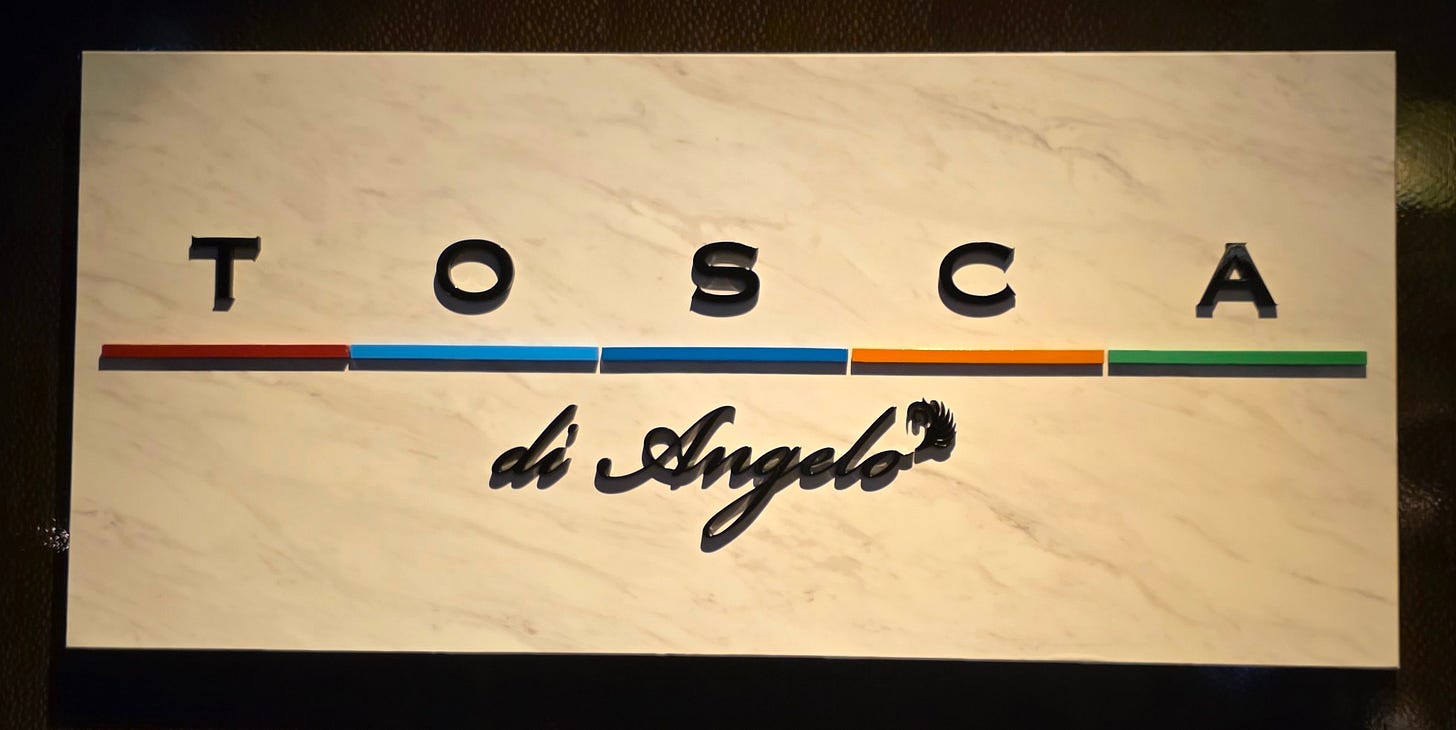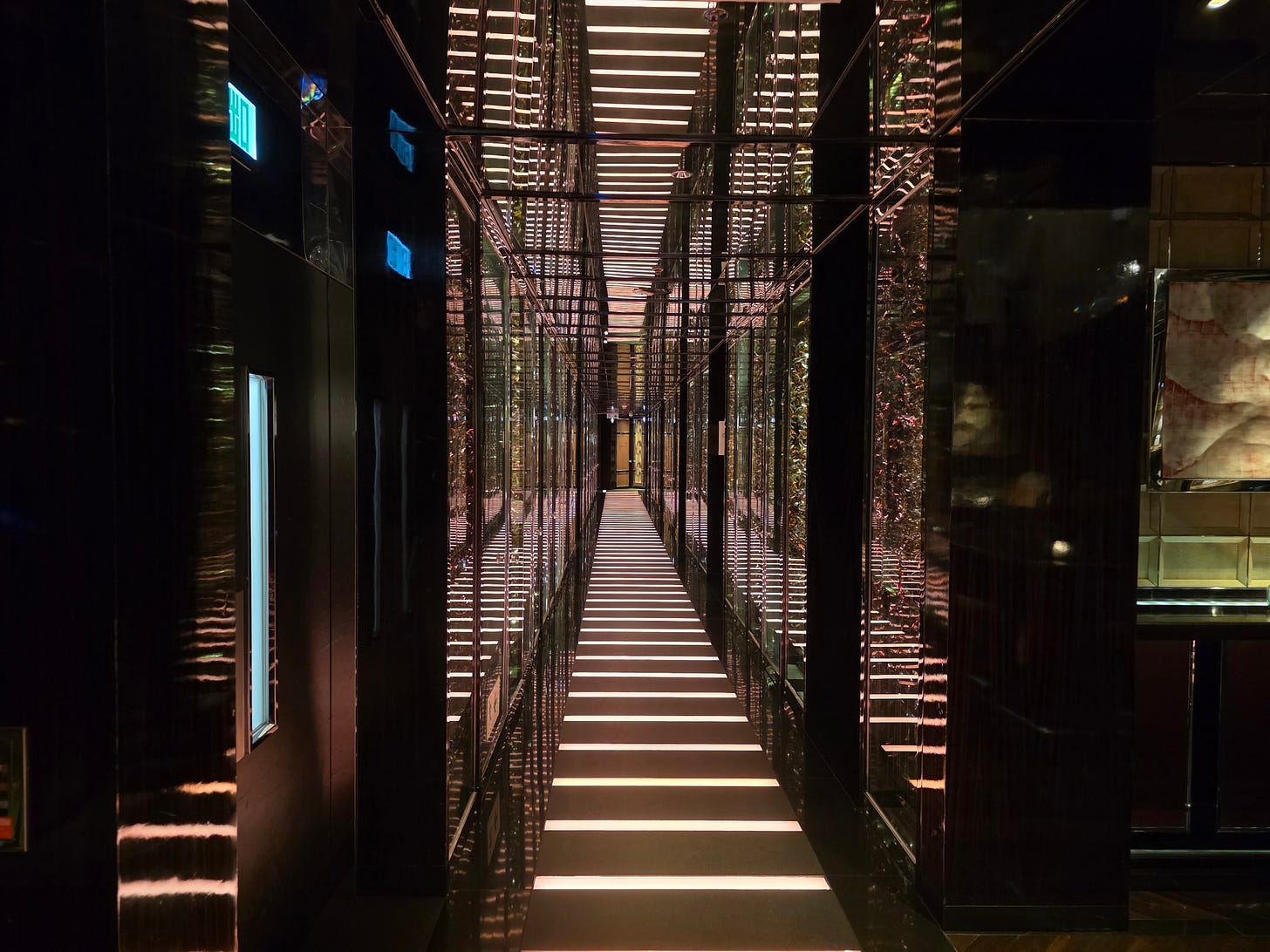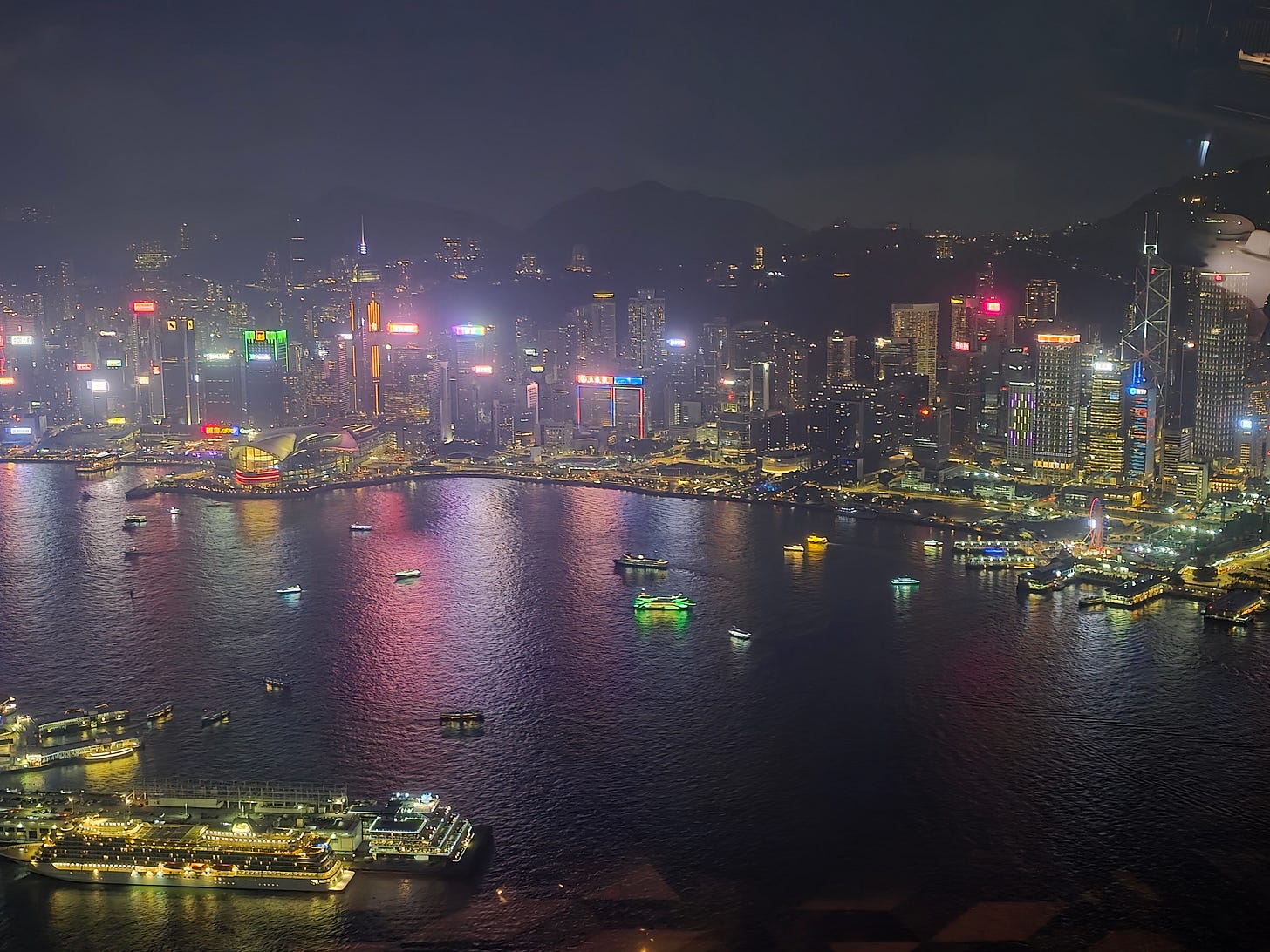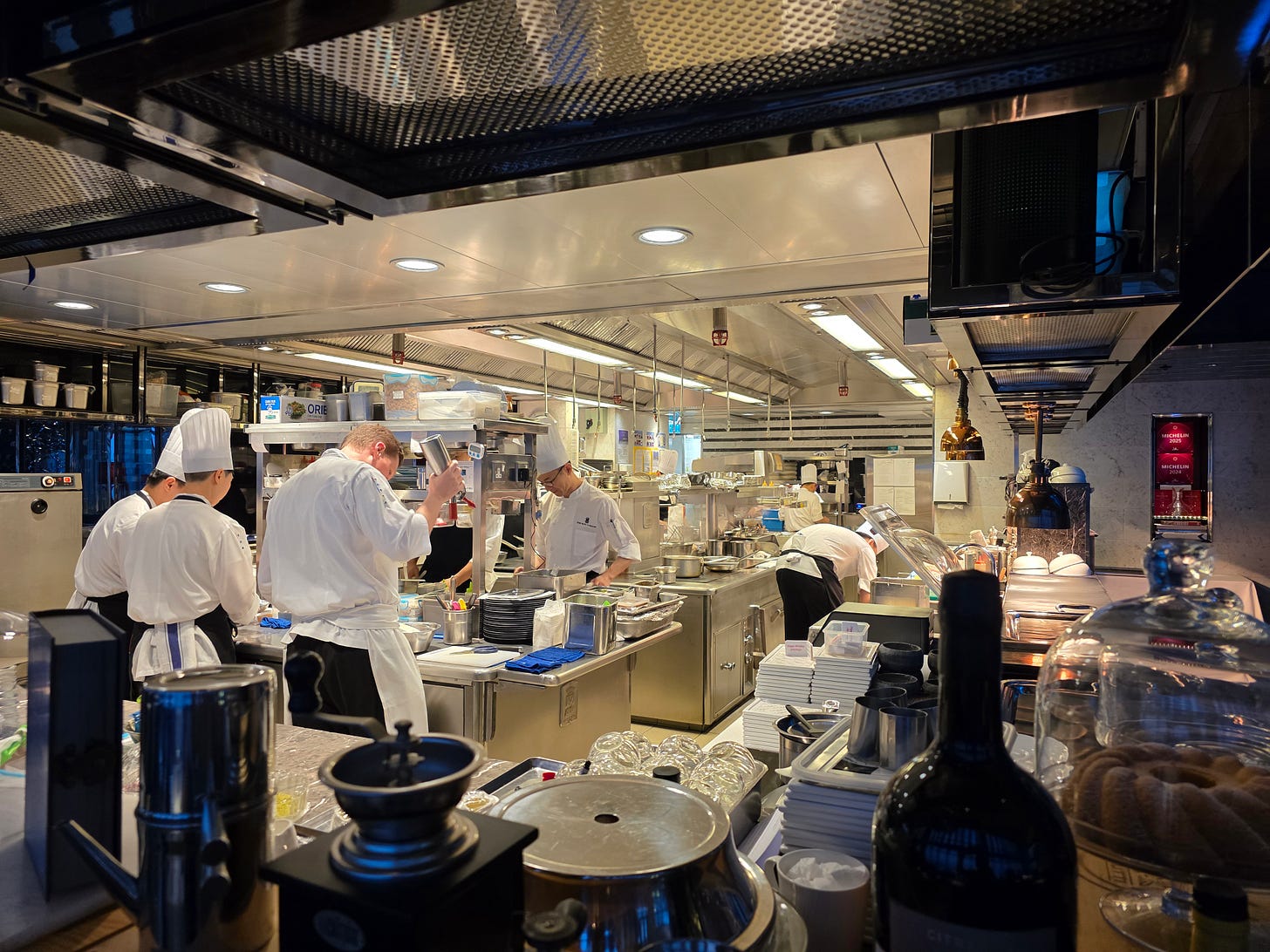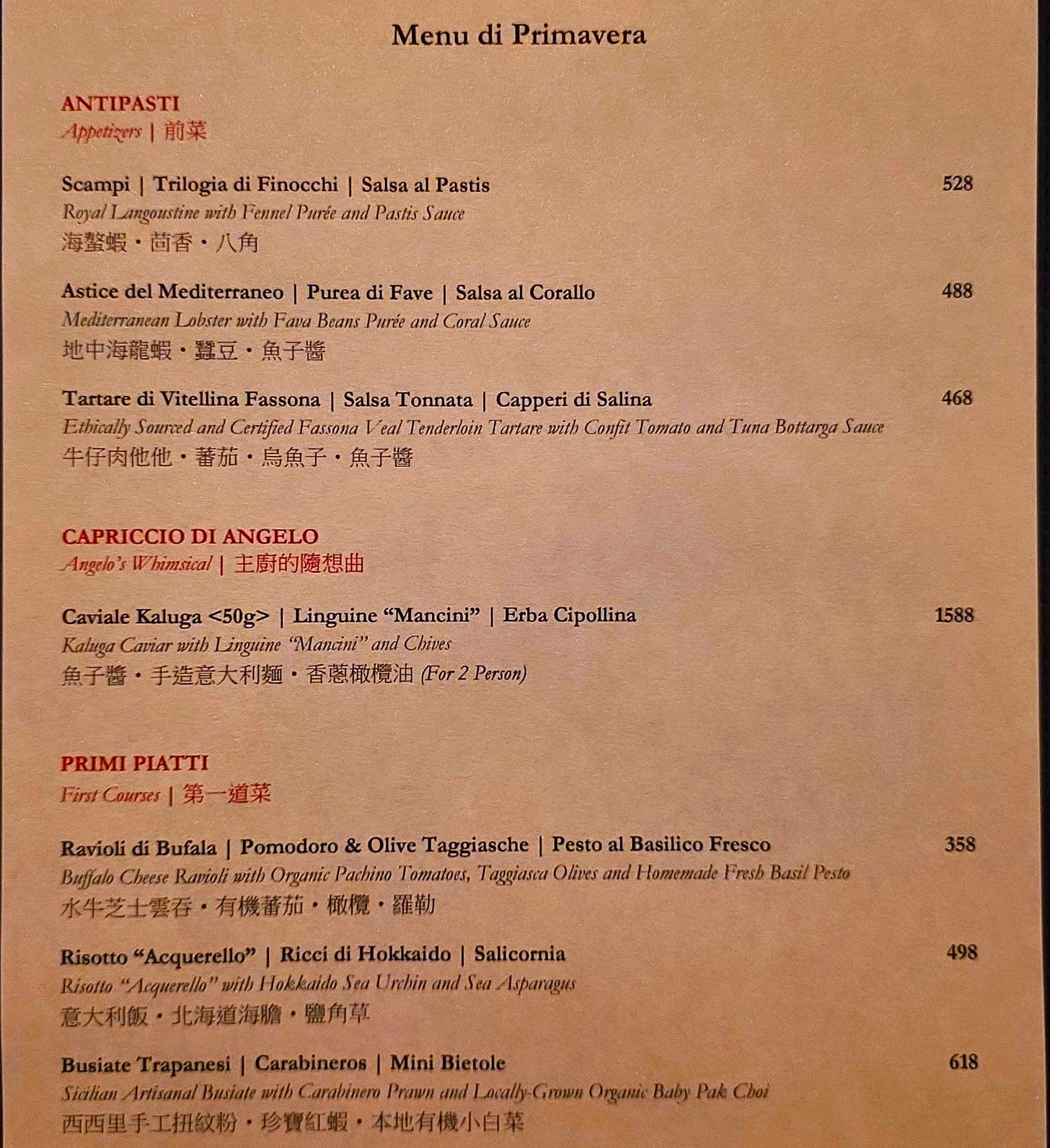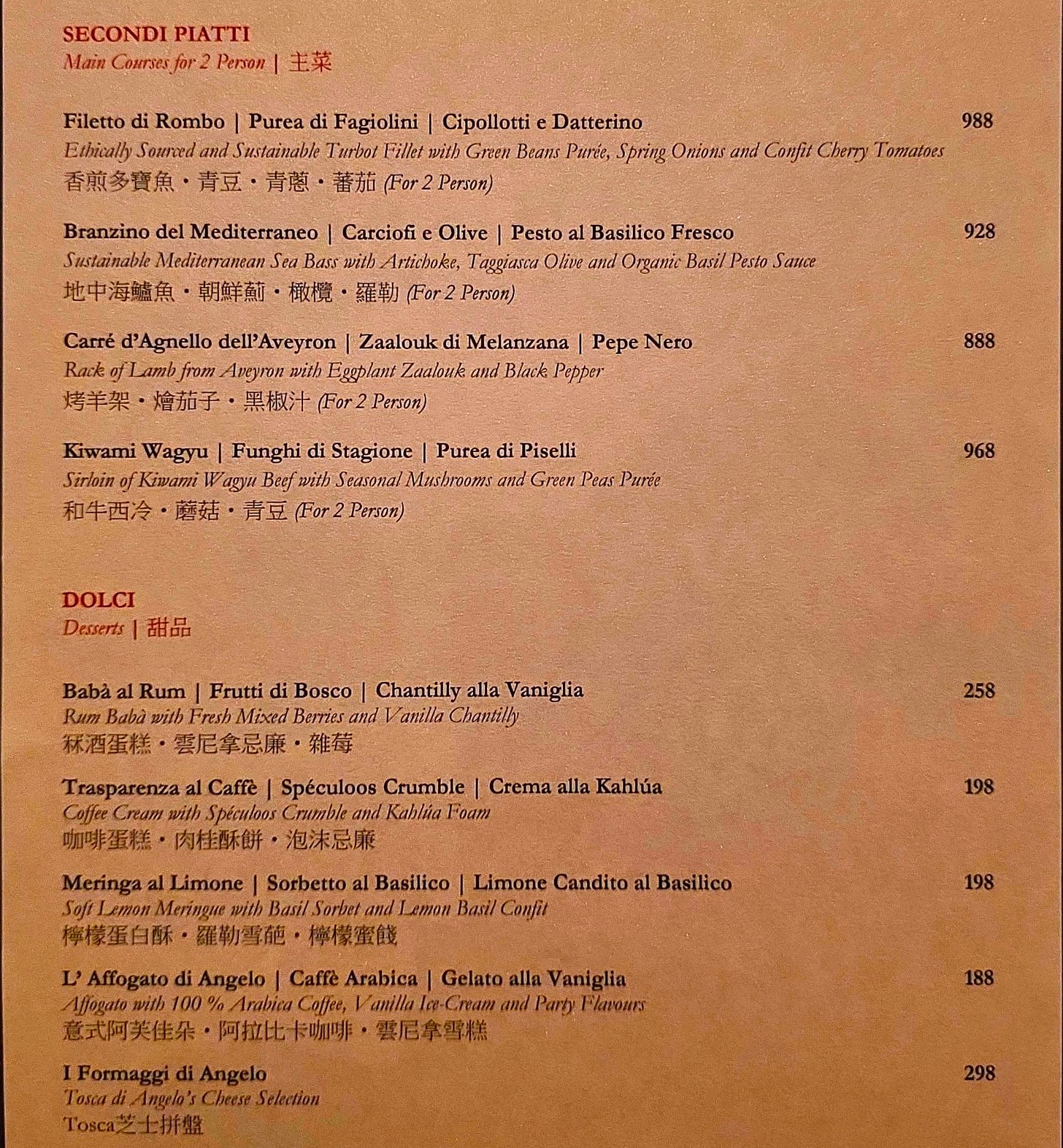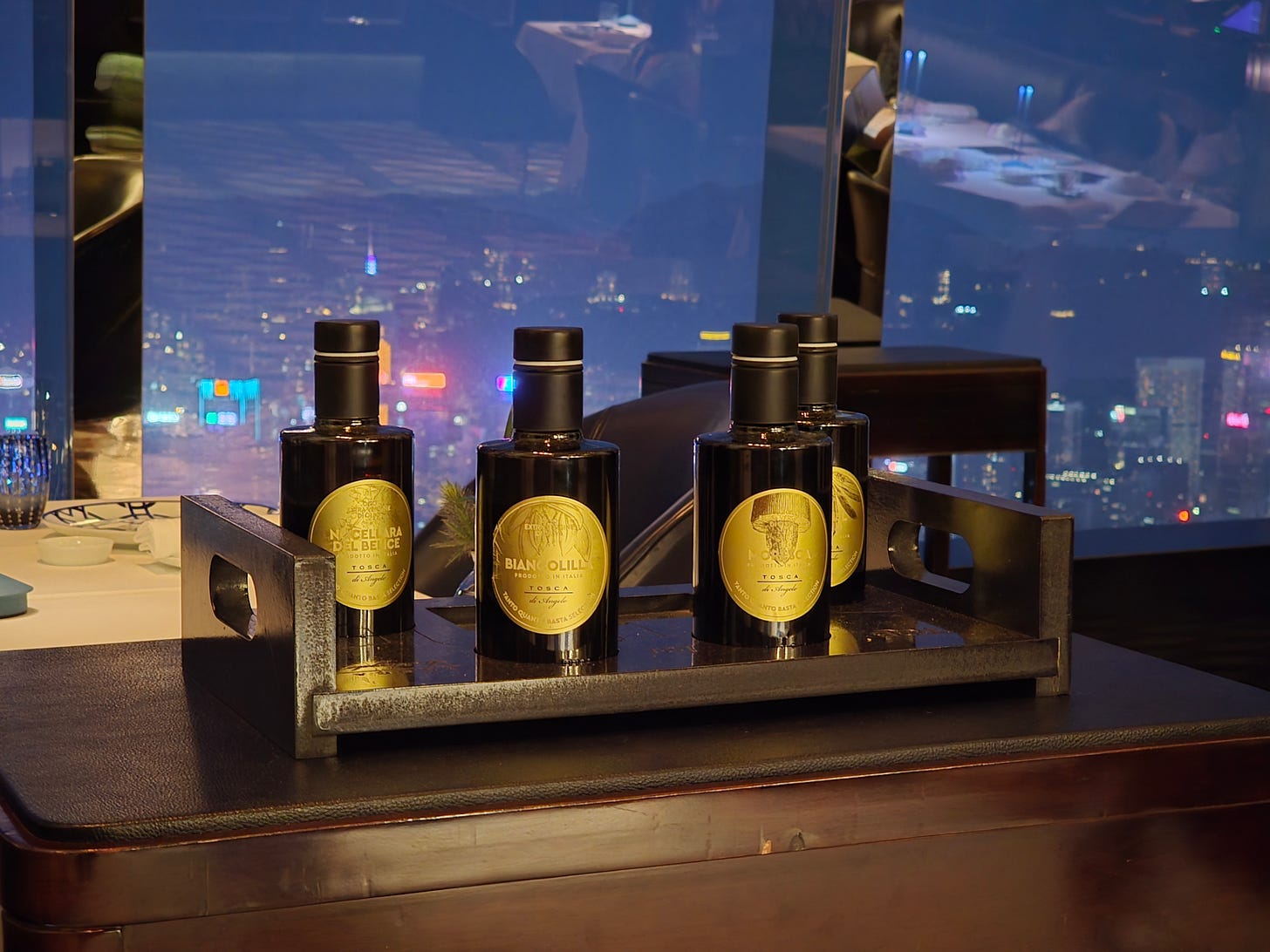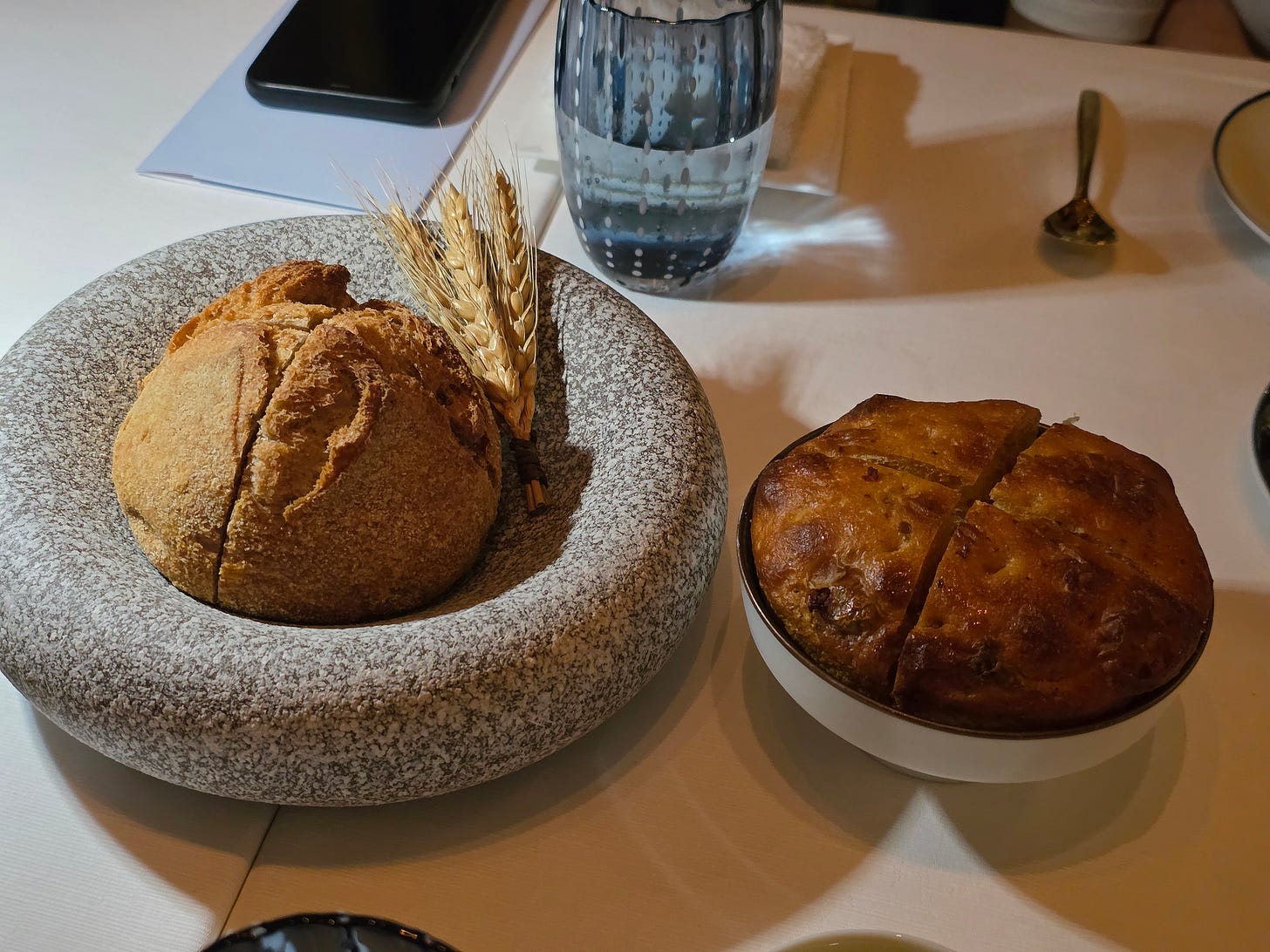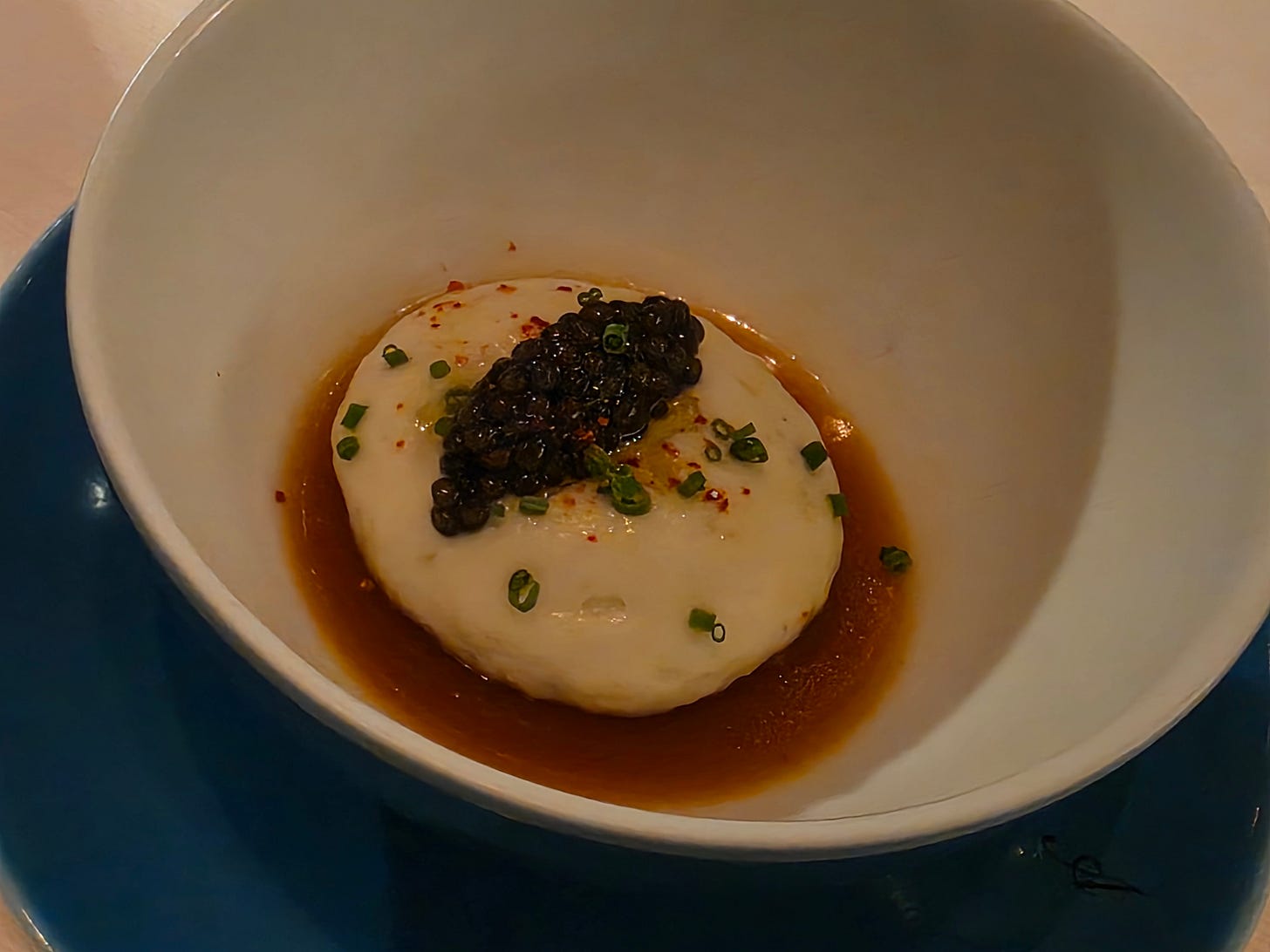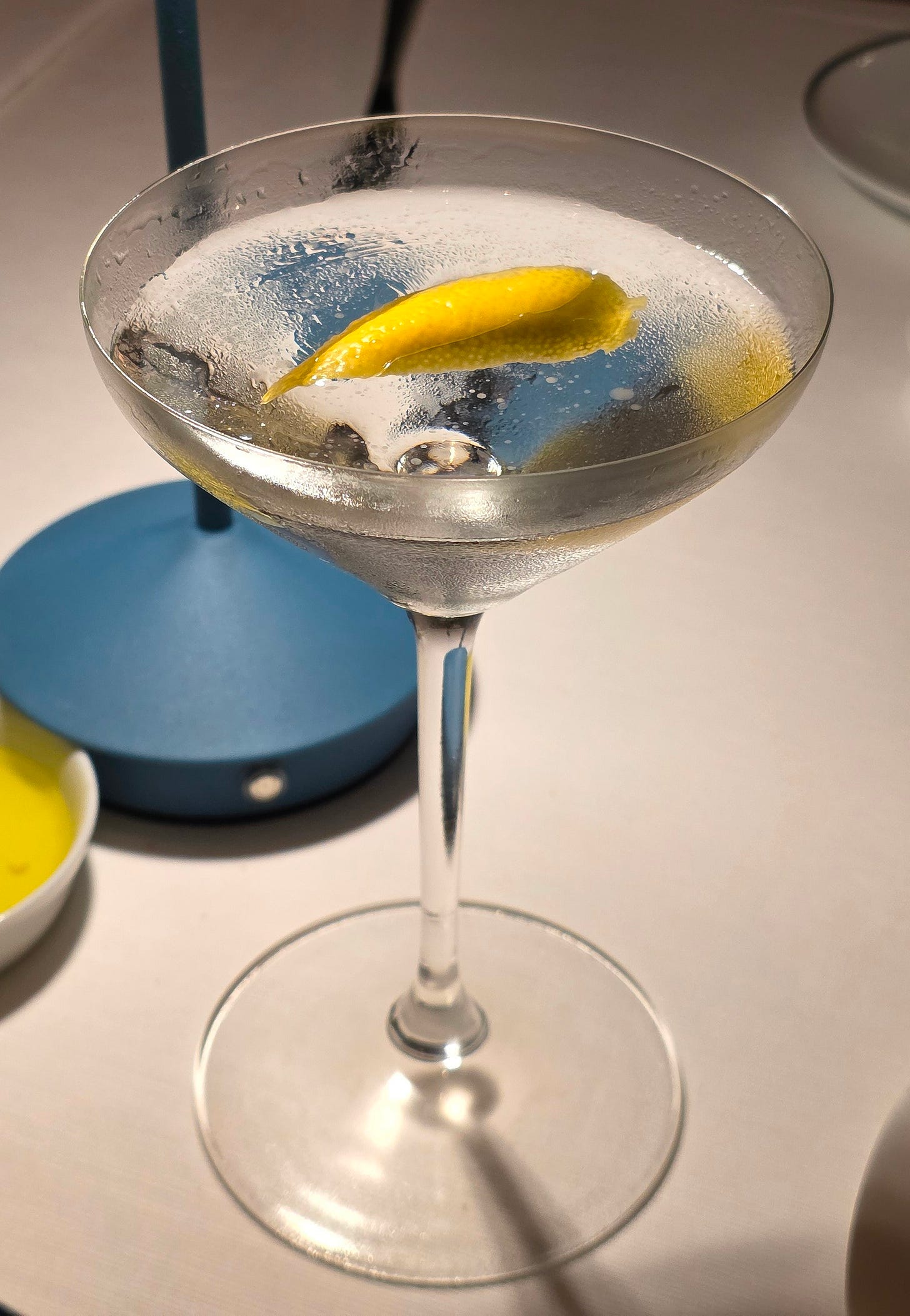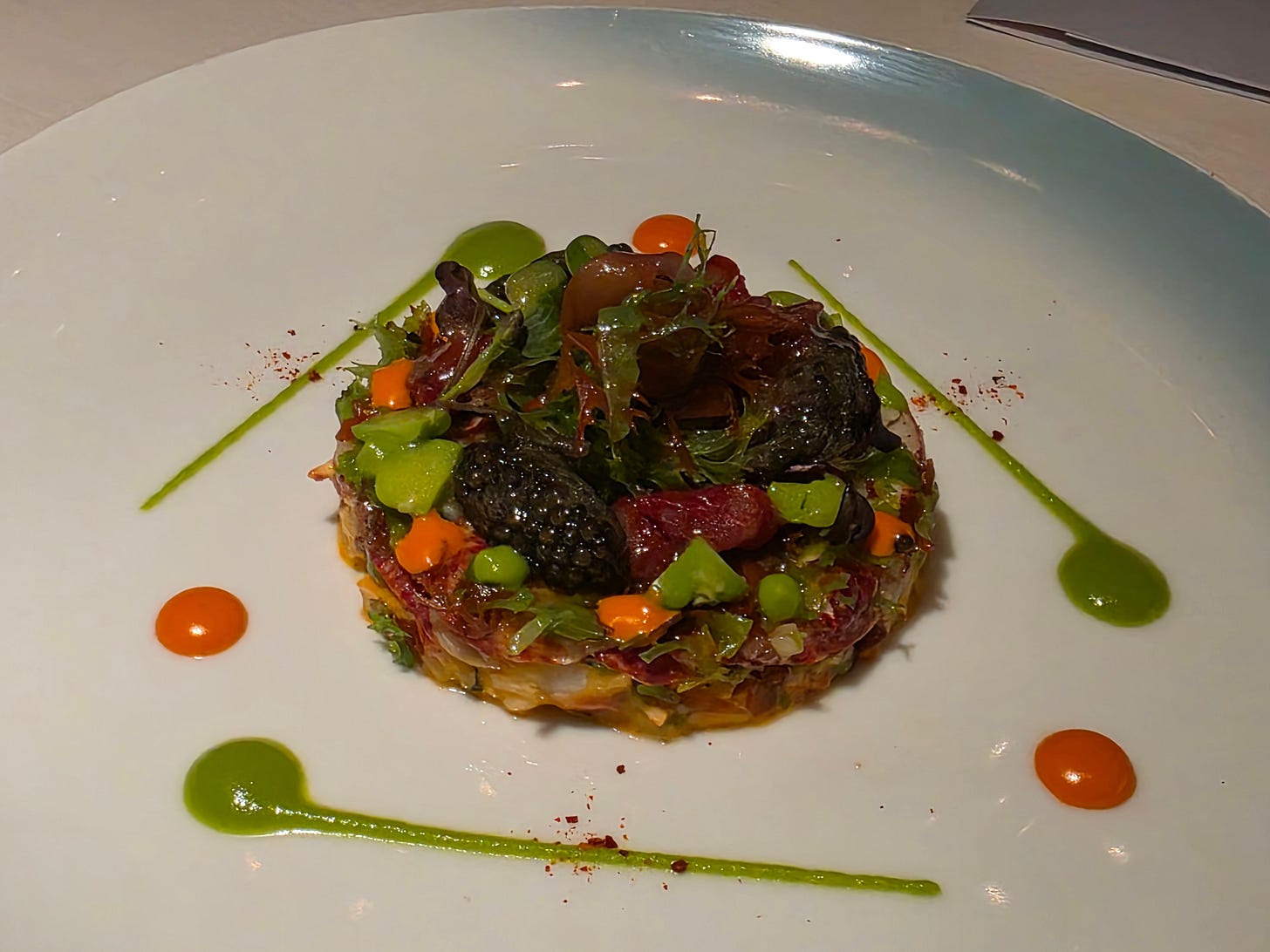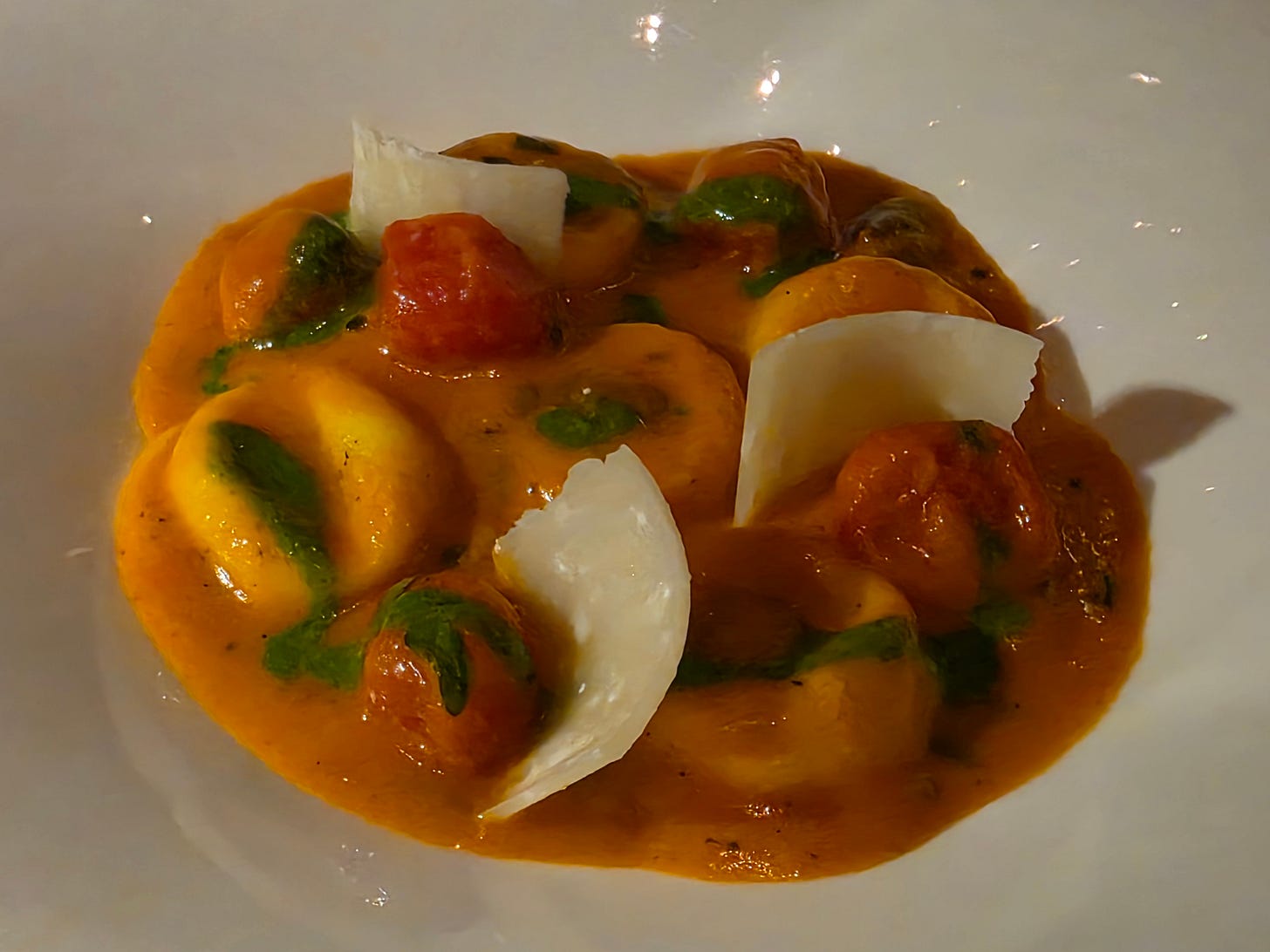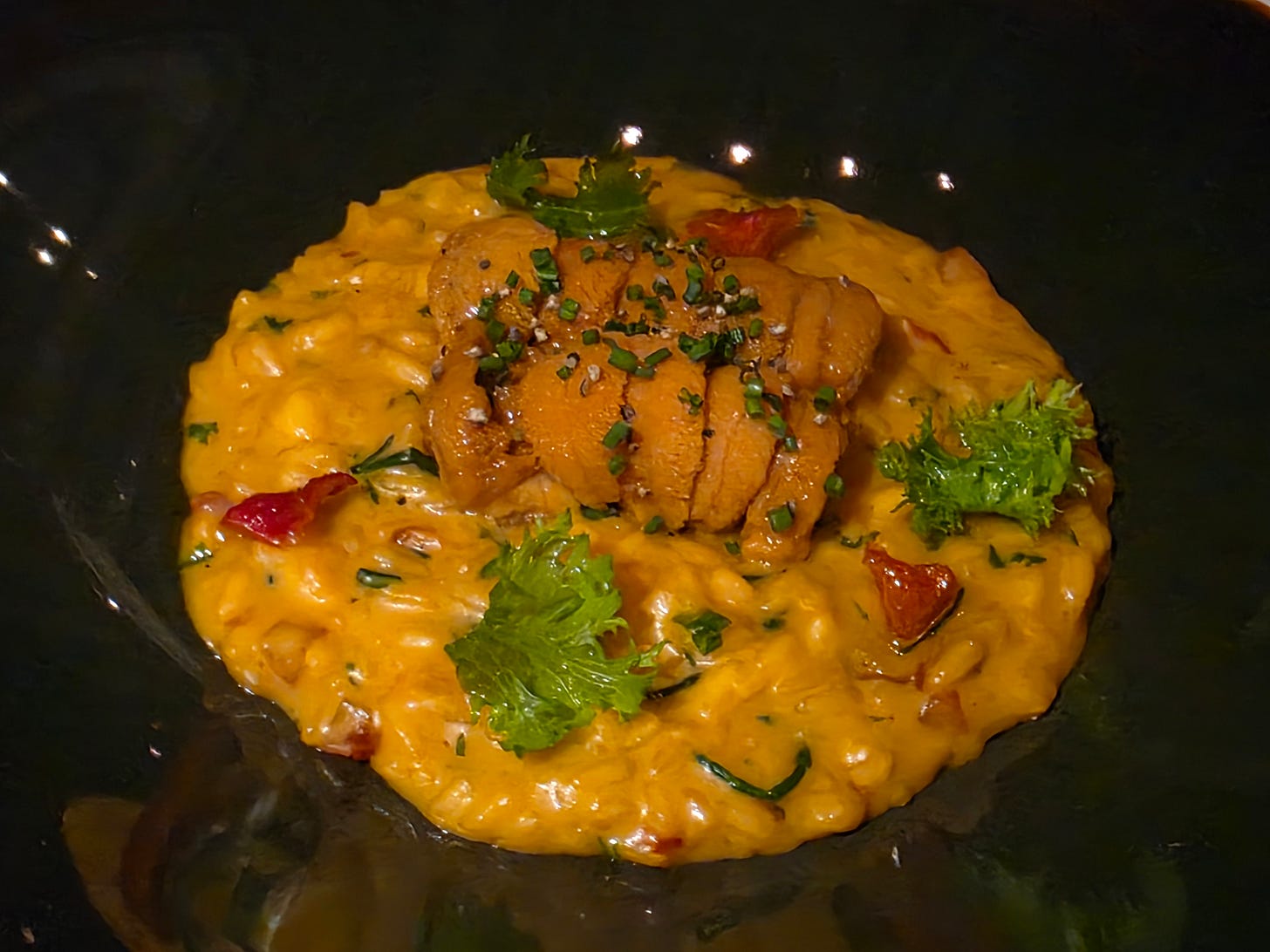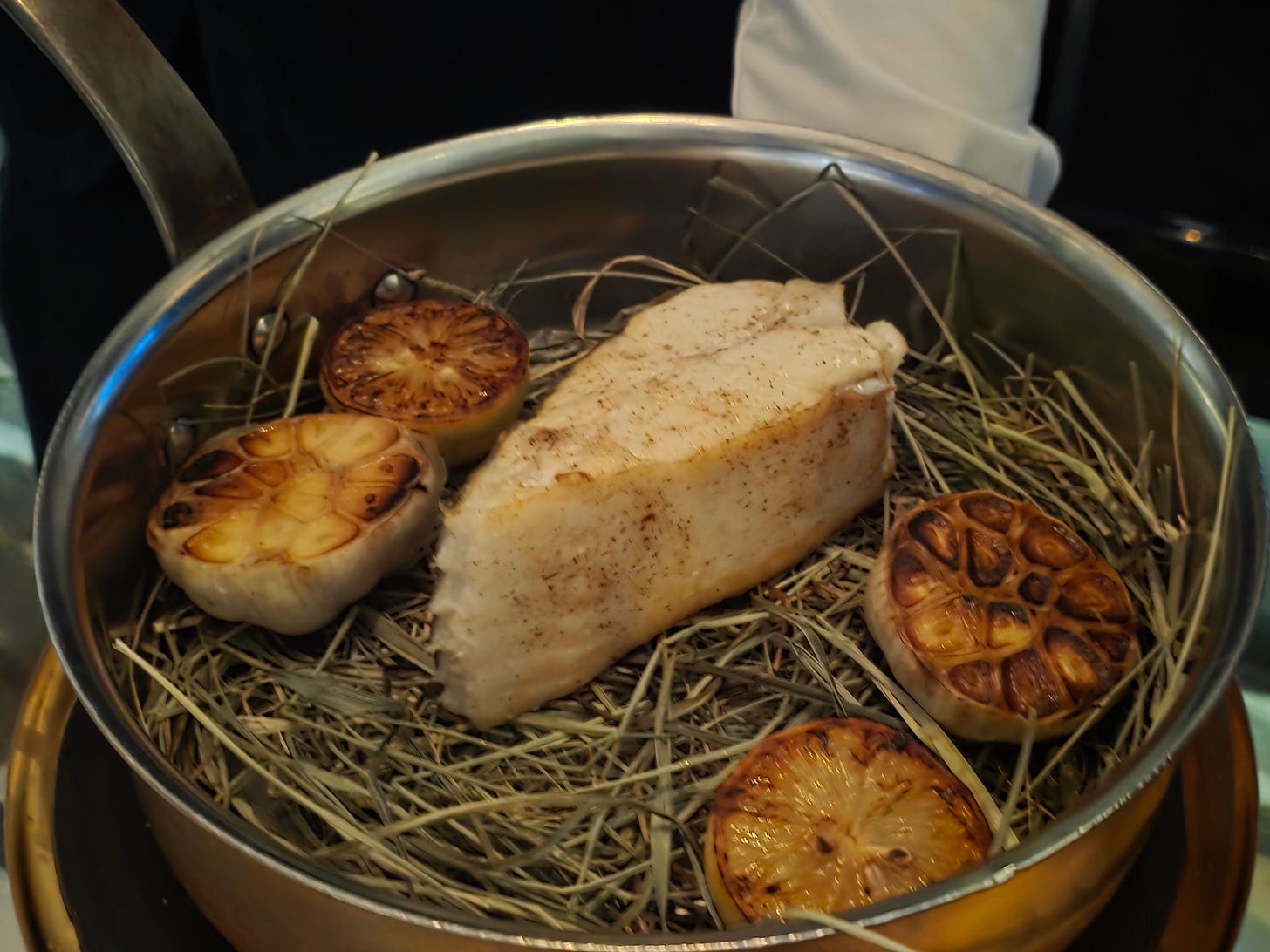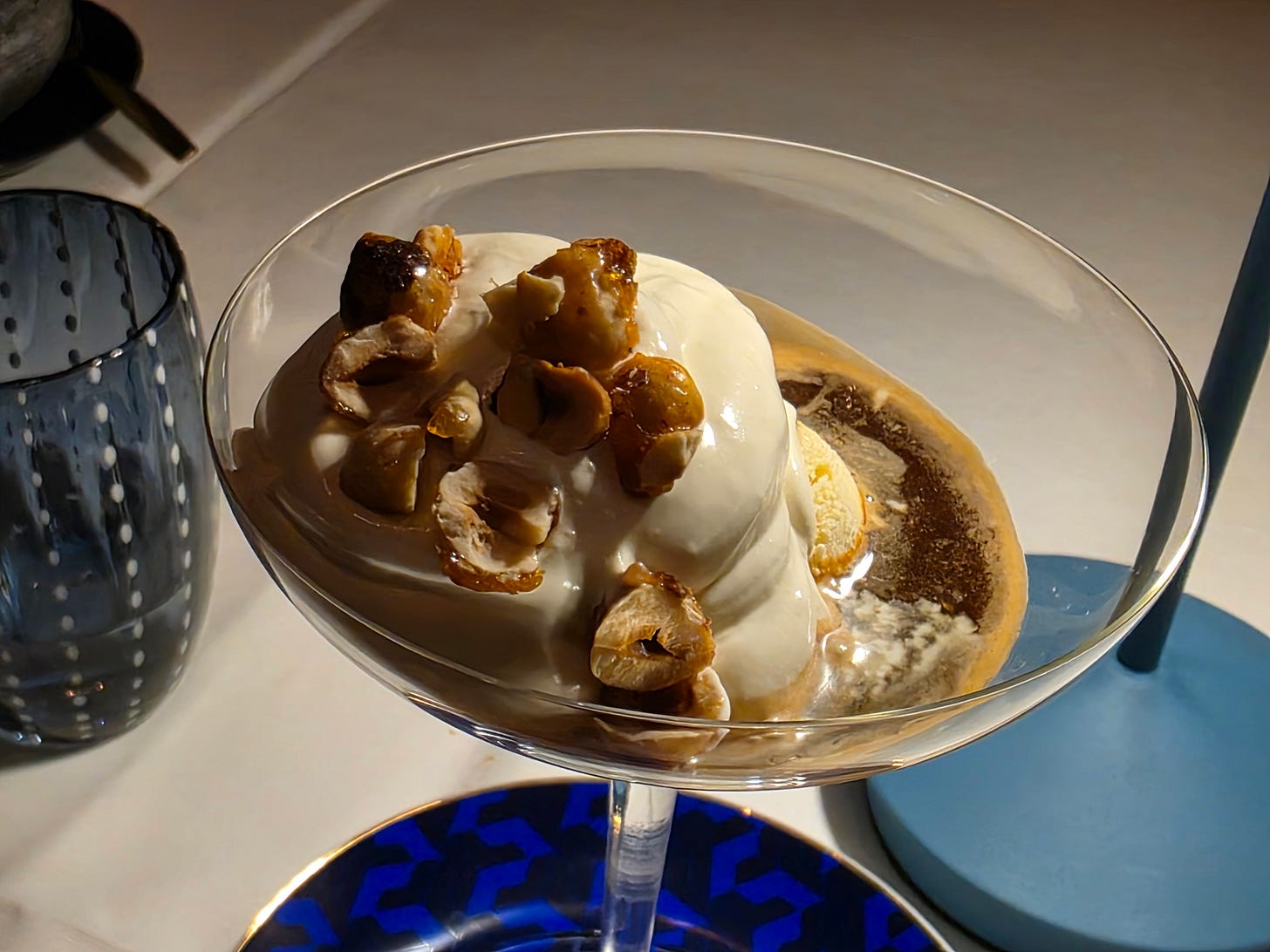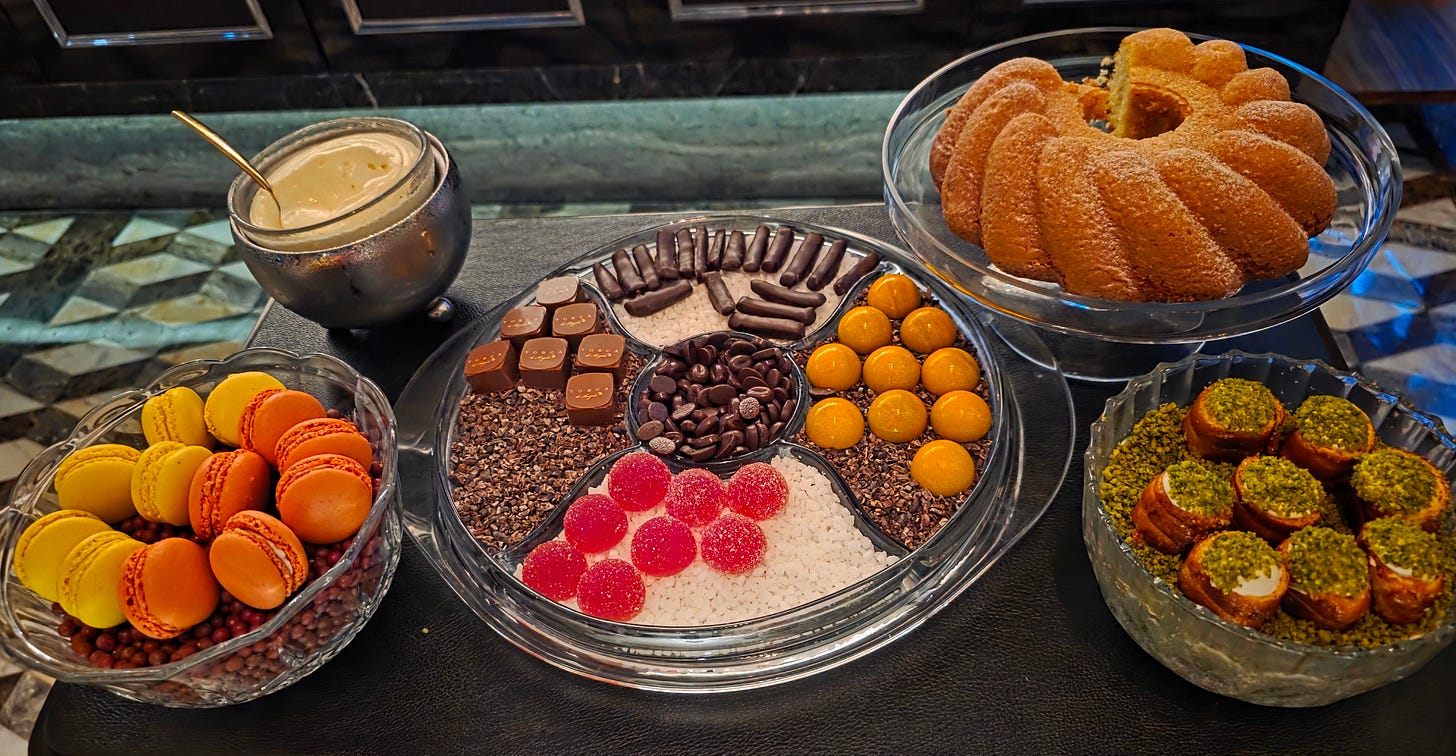Tosca di Angelo
Sicilian Cuisine High above the Skyline in Hong Kong
Tosca di Angelo is a Michelin-starred Italian fine dining restaurant located on the 102nd floor of the ICC building, the tallest tower in Hong Kong. Known for its stunning panoramic views of Victoria Harbour, it features Mediterranean-inspired cuisine crafted by Sicilian chef Angelo Aglianó.
The restaurant’s name draws inspiration from Giacomo Puccini’s opera Tosca, set in Rome in 1800, which tells the tragic story of opera singer Floria Tosca, her lover Mario Cavaradossi, and the ruthless Baron Scarpia.
The restaurant was opened with the hotel in 2011, and was originally helmed by Chef Pino Lavarra, leading to Tosca earning its first Michelin star in 2012 and holding it ever since. When Chef Pino expressed a desire to move on, Chef Angelo took over as executive chef in early 2019.
Chef Angelo is a Sicilian chef renowned for his expertise in southern Italian and Mediterranean cuisine. Hailing from a region known for its rich culinary traditions, vibrant seafood, and bold flavors, Chef Angelo’s father was a professional fisherman, and the chef’s Sicilian roots heavily influence his cooking, emphasizing fresh, high-quality ingredients and authentic Italian techniques. His dishes highlight seasonal ingredients, particularly seafood, house-made pastas, and premium Italian imports like burrata, bottarga (salted dried cod roe), and truffles. He aims to create refined yet approachable meals that evoke the warmth and vibrancy of Sicily.
Chef Angelo’s career has taken him around the Europe, from Milan to London and Paris. Eventually, Chef Angelo came under the tutelage of legendary Chef Joel Robuchon in Monaco and eventually moved out to Asia to help open the L’Atelier de Joel Robuchon locations in both Taipei and Hong Kong. After leaving Robuchon, Chef Angelo decided to strike out on his own and opened his own restaurants in Taipei and Hong Kong before taking up residence at Tosca, which was eventually renamed Tosca Di Angelo.
The restaurant is located one floor down from the sky lobby of the Ritz Carlton, one of the highest hotels in the world.
On one side is a mirrored hallway with discrete private dining rooms lining each side.
The main dining room offers a 270 degree view of the Hong Kong skyline, making it a prime date venue for New Years, Christmas, or any holiday with fireworks.
The other side of the main dining room, features an open show kitchen with the staff busily working the pass.
Before seeing the menu, we were presented with the amuse bouche, presented on a bed of split peas and dried popcorn kernels. Clockwise from the right:
a square of lobster jelly with chunks of lobster meat, topped with a dab of lobster coral sauce served on a cracker. Briny with concentrated lobster flavour.
a wavy tart filled with a rich foie gras foam and a sweet red onion jam.
a circular tart filled with refreshing diced cucumber and highlighting the slice of dense, salty bottarga, a Sicilian ingredient made with compressed salted, dried cod roe. This is one of the signature ingredients that Chef Angelo tries incorporate into multiple dishes in his menu.
While there was a tasting menu available, we were feeling a bit peckish and decided to go a la carte instead.
The bread course started with server wheeling over a cart of single original artisanal olive oils, each from a different producer in Italy. I missed most of what he said because he was mumbling a bit quietly, but I caught words like “grassy, peppery and pungent”, before him to recommend one for me.
The breads consisted of a homemade sourdough made with a 15 year old starter (Next year, it can get its driver’s license!), and an olive focaccia. Personally, I’m not a big fan of focaccia. I always find that it’s a bit greasy and leaves my hand oily. The sourdough was an absolute hit, served piping hot out of the oven with a crusty exterior and a warm, moist, steaming interior.
The final amuse bouche before the main event was a shrimp tartare embedded in a thickened prawn jelly, topped with a dense celeriac foam and a spoonful of Kaluga caviar. The interesting part of this dish was really the earthy nuttiness of the celeriac contrasting with the hit of concentrated shrimp flavours and brininess of the caviar.
As it was a special occasion, I decided to celebrate with a Vesper. This would later turn out to be a mistake. Coming off a few months sober, breaking sobriety with mostly straight vodka was a regrettable decision.
The first appetizer was a Mediterranean lobster with fava bean puree and coral sauce, served looking like a beef tartare, but fully cooked. The roughly chopped lobster was topped with more caviar and some seaweed and dotted with the fava bean puree and the bright orange coral sauce. Not exactly what I was expecting, but a pretty promising start.
The next appetizer was the royal langoustine with a fennel puree and a dill fennel and Patis sauce made from fermented salted fish. The langoustine was cooked to a perfect medium rare, with a slight herbal flavour cutting into the salty umami bomb from the fish sauce.
Moving into the pastas, the next three pastas were presented simultaneously family-style.
A buffalo cheese ravioli in a cherry tomato and olive sauce, topped with basil pesto and thin slices of Parmigiano Reggiano. The tanginess of sauce cutting into some of the creaminess of the ravioli.
A Sicilian busiati, a really unique shape of pasta I’ve never seen before. A long, flat roughly-textured slice of pasta formed into a long spiral. The busiati was served with three kinds of prawns, a halved wild Carabinero Prawn from the Mediterranean, and two smaller kinds of shrimp in a rich crustacean sauce. Of the three pastas, this was my favourite, mainly for the long strands of perfectly al dente, perfectly salted and sauced pasta.
A rich risotto cooked with sea asparagus and topped with a generous helping of Hokkaido uni (sea urchin). Rich, decadent and delicious.
We were getting pretty full, but we still had the secondi coming. We went with the turbot, the king of fish. A giant fillet of turbot was presented to us on a bed of hay before plating with a green bean puree and cherry tomatoes.
My dessert was an affogato, made tableside. Two scoops of vanilla gelato, a shot of espresso, and a second shot of espresso liqueur, topped with a choice of nuts or chocolate chips. I stuck to just the crushed hazelnuts. Absolutely delicious and I was left wondering why I don’t do affogato more often.
My companion went with a soft lemon meringue filled with a basil jelly and a basil sorbet. Interesting flavour combinations, and I can’t say I’m a fan of soft meringue. I like my meringue crispy! (Although I do have some favoritism toward the soft meringue in a baked Alaska)
A surprise waiting for us, as we were celebrating a birthday. A thin disc of chocolate, hiding icy pellets of quick dried ice cream underneath. I strongly suspected that they used a liquid nitrogen or dry ice preparation, as I’ve never seen ice cream formed into pellets in any other way. A generous gesture from the restaurant.
Finally, they wheeled over a cart of Petit Fours - with an assortment of raspberry and lemon macarons, chocolates, cannolis as lemon cake with Chantilly cream. Getting pretty full, I took a single jelly, while my companions chose some of the macarons and chocolates.
Overall, I thought Tosca di Angelo was a fairly decent, but unexceptional restaurant in Hong Kong. The pasta was definitely the highlight of the meal, especially the unique busiati. Otherwise, I found the menu a bit generic, although the execution was pretty decent. Miles better than Octavium, but nowhere close to the wonderful experience we had at Otto e Mezzo.
Total Damage: 4500 HKD/3 people.


